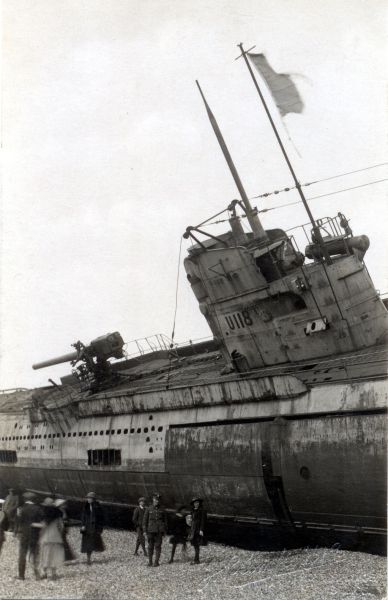John Henry Blomfield

Stranded German submarine on Hastings beach in 1919
Royal Studios, Robertson Street, Hastings. David Simkin has written a detailed account of John Blomfield's long and distinguished career as a professional photographer in Hastings and only an overview of David's findings will be presented here (for further details and family portraits please visit David's website (http://photohistory-sussex.co.uk). John Blomfield was born at New Romney on April 14, 1850 and was the fifth of seven children of Henry Blomfield (1817-1889) and Elizabeth Blomfield, formerly Eldridge (1822-1890). Following their marriage in November 1840 in Hastings, Henry and Elizabeth sailed for Jamaica where they worked as teachers at a Baptist Mission School. Their eldest son, William Knibb Blomfield, was born in Jamaica in 1842. After returning to Britain in 1847, Henry and Elizabeth lived for a short time in Hastings, before moving to New Romney in Kent, where Henry served as a Baptist minister. In the mid 1850s the Blomfields returned to the Hastings area, settling in Ore where they set up a small Boarding and Day School.
In 1867 William Knibb Blomfield in partnership with his younger brother, John Henry Blomfield, took over an existing photographic studio at Trinity House, 44 Robertson Street in Hastings. The two brothers traded as Messrs. W. and J. Blomfield. In 1870 they rented out the Robertson Street property and moved their business to St Leonards, where Henry and Elizabeth ran a lodging house and William had his home. William began to suffer increasingly from tuberculosis and travelled to Jamaica in a vain attempt to restore his health. John took full charge of the photographic business and moved it back to 44 Robertson Street. His unfortunate brother died from TB at St Leonards in 1878, aged only 35.
In 1882 John married Mary Elizabeth Grace Hoffman, who had been born in County Down. They had four sons and three daughters, but only five survived to adulthood. John and Mary's second son, who happened also to be called John, attended Hastings Grammar School and was practicing cricket in the nets when a ball that struck him over the heart killed him.
For many years John senior lived with his family at 41 Wellington Square. He renamed his Robertson Street premises the Royal Studios in about 1895. During 1928 failing health forced him to retire and he died on August 28, aged 78.
The Blomfield Studios specialised in studio portraiture, and are well known to collectors of cartes and cabinet prints. Strangely, the role of the firm in publishing postcards has received relatively little attention. That Blomfield quickly embraced postcard publication is demonstrated by a real photographic card of "Crowhurst Otter Hounds", which has "J. H. Blomfield Royal Studios Hastings" printed on the back and was posted in 1903. Much later is the card shown above, which shows the celebrated German submarine that became stranded on Hastings beach in 1919 after breaking its tow off Beachy Head. It is blind stamped (impressed) "J. H. Blomfield & Co." in the bottom right corner. Many cards, by contrast, are rubber stamped "J. H. Blomfield" on the reverse and show the University School at Hastings (on the corner of Holmesdale Gardens and Redmayne Drive), which John had attended as a boy. At least one of these cards was issued in 1906, others date from just before the First World War or from the 1920s. A card showing 1929 sporting trophies must have produced by the Royal Studios after the founder's death.
Two photographs of the spacious interior of the Royal Studios taken in the 1890s are reproduced in Hastings Bygones, vol. 3, p. 54 (Hastings Local History Group, 2000).
Acknowledgement: The above account draws heavily on David Simkin's researches set out on his website at (http://photohistory-sussex.co.uk).
To directory of publishersTo gallery
Design: Lucid Design
© www.sussexpostcards.info
